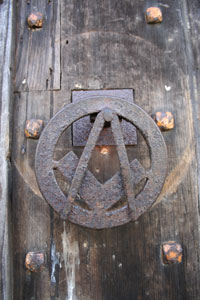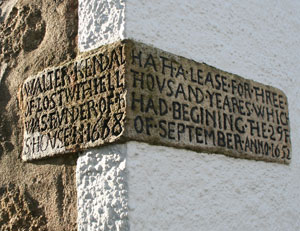History of Lostwithiel

Lostwithiel has a rich heritage, of which there is plenty of evidence as you explore the town.
Founded by the Norman lords who built the original Restormel Castle, it was developed to become a major port for seagoing ships, exporting tin to Europe and the Eastern Mediterranean. The castle was rebuilt in the late 13th century by Edmund, Earl of Cornwall, who was also responsible for building the Great Hall, the bridge and the square church tower. Edmund was very proud of his beautiful, thriving little town and called it his 'Lily of the Valley' and 'Fairest of Small Cities'.
The name Lostwithiel was documented in the charter of 1189. It is believed to come from the Old Cornish 'Lostgwydeyel' meaning 'the place at the tail of the forest'. Throughout the 14th century Lostwithiel, known as 'The Port of Fawi', was the capital of Cornwall, administering affairs both Cornish and stannary (relating to tin) from the Great Hall until the Stannary Parliament was discontinued in 1752. The Great Hall later became known as the Duchy Palace.
During the 14th century the river began to silt up owing to excessive streaming for tin on the moors. It gradually became unnavigable to sea-going ships and Lostwithiel lost its shipping trade to Fowey. Tin and other goods were sent down river in boats of shallower draught. As production of tin in this area declined, miners moved further west and Lostwithiel developed alternative trade in weaving, tanning, pottery and pewter.
In 1644 Lostwithiel and the Fowey peninsula were occupied by 10,000 Parliamentary soldiers. They were followed by King Charles I and his army, who together with Royalist forces from the west and north, besieged the area through the month of August. This was a disastrous month for Lostwithiel.

The church was damaged, the Duchy Palace was burned and the records were destroyed, and the bridge narrowly escaped being blown up. There was a great shortage of food, and starvation and plague were rife amongst the population and the occupying army.
Eventually the Parliamentarians retreated to Castle Dore and surrendered to the King. It was now a Royalist victory, but the town was left badly shattered. Many of the town houses (some now shops) were built in the years following the Civil War.
In the 18th century Lostwithiel was a 'Pocket Borough' for the Pitt and then the Edgcumbe families. The latter became patrons of the town, buying land and building substantial properties, including Edgcumbe House, the Guildhall with the Corn Exchange beneath, and the Old Grammar School.
In the early 19th century iron was mined north of Lostwithiel, and a thriving industry developed, resulting in rapid growth of the town. During this period Coulson Park, now a quiet riverside walk, was the scene of much noisy, heavy work. Iron ore was carried down from the mines in horse-drawn wagons, running on tram lines through the town to the jetty where it was transferred to barges for shipping down river. This 'boom industry' came to an end in the first decade of the 20th century. The river was used commercially into the 20th century, when limestone was barged up to the lime kilns to be made into fertilizer for agricultural use.
Brunel's railway came through the town in 1859 and the maintenance works designed by him were built here, providing work for almost a century. The 'Creamery' developed between the years 1932-1991 and, as the need for railway workers diminished, it became the major employer in Lostwithiel, until it too closed down.
Today there is an interesting variety of small scale businesses in the town. Lostwithiel is once again experiencing change in its long, proud history. The people of the town are actively involved in the developments taking place and welcome the interest of visitors to this 'Fairest of Small Cities'.
Words by Barbara Fraser.